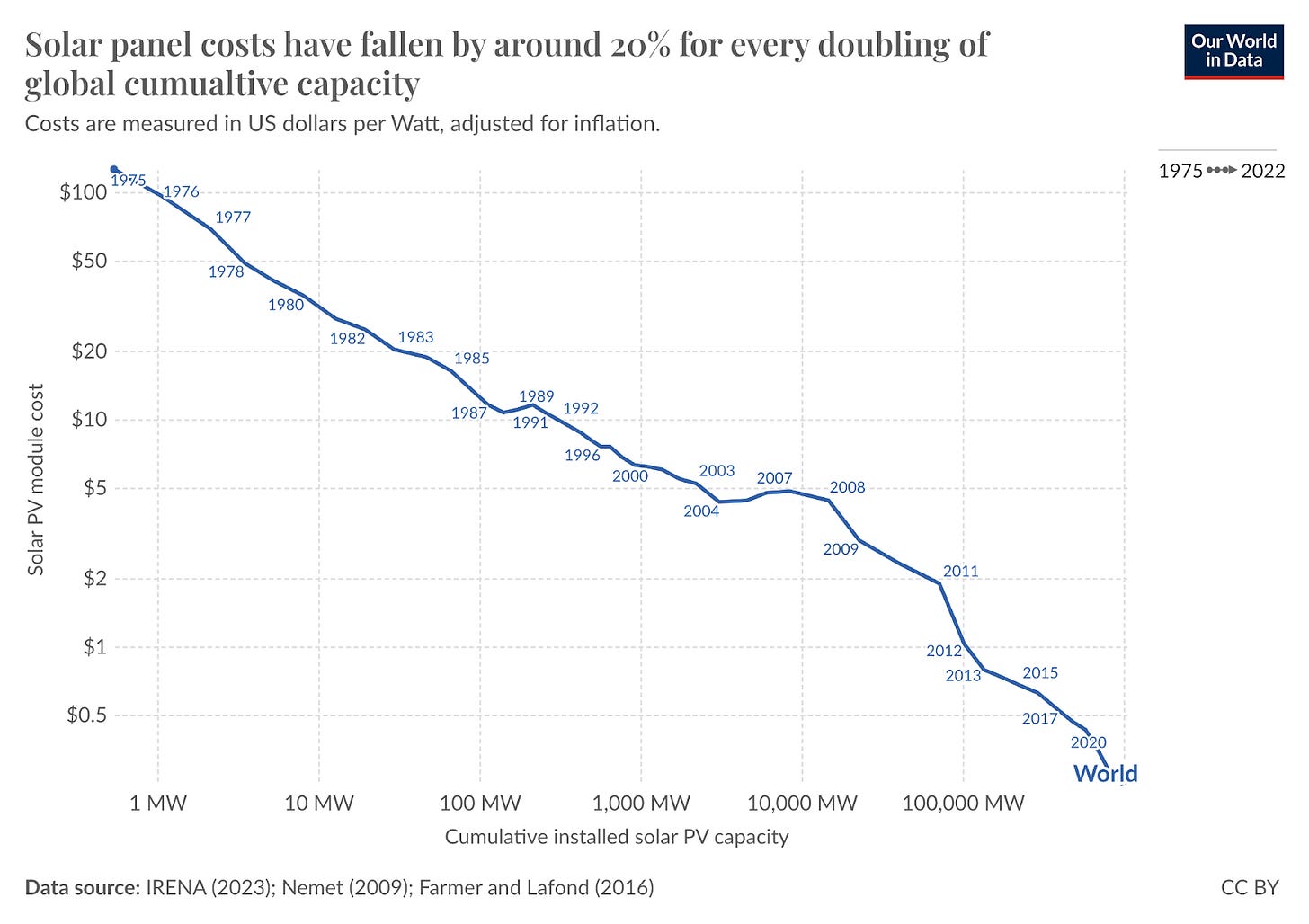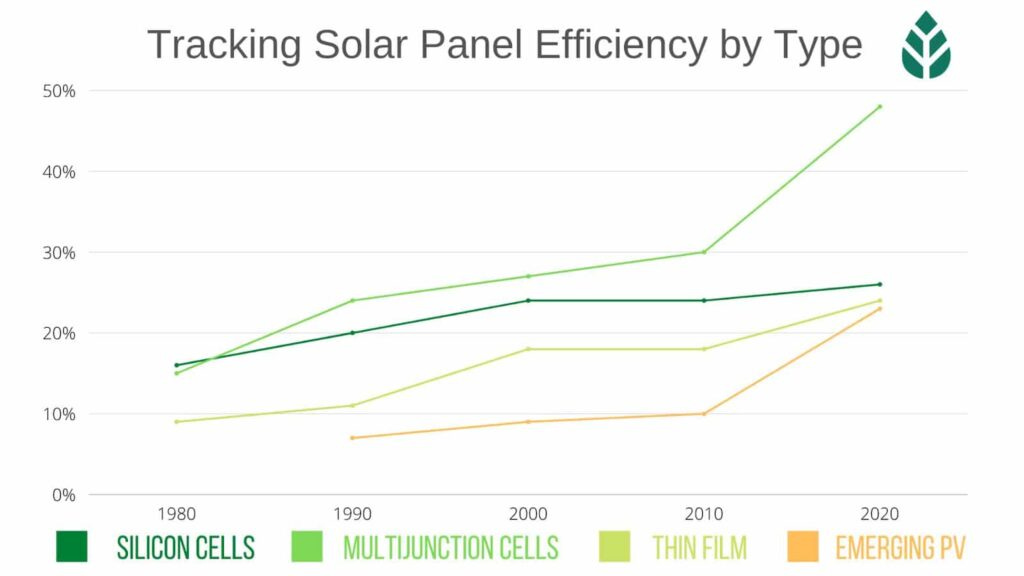Seed and Speculations #13: Reflect Orbital
A deep dive on Reflect Orbital, a Sequoia backed company selling sunlight.
Good morning Everybody,
Thanks for being here. Hope everyone’s week has been going well.
In today’s deep dive, we’ll examine Reflect Orbital, a company that recently raised $6.5M from Sequoia and others to — get this — sell sunlight as a service.
Let’s get into it.
Solar — Where are we headed?
According to most projections, solar power will be a significant part of the future energy equation.
By 2030, estimates are that:
Growth in photovoltaic solar power will account for approximately 80% of growth in renewable energy capacity
Solar power will make up nearly 25% of all energy
While seemingly lofty when considering our current dependence on fossil fuels, these projections are entirely feasible.
Every day, the sun delivers 173,000 terawatts (TW) of energy to Earth —nearly 10,000 times humanity’s daily energy consumption. Harnessing just 0.2% of this energy with 10% efficient solar panels would generate an energy surplus.
Achieving this, however, requires a massive effort. In the U.S., scaling solar to 30% of energy generation, the goal for 2030, will require 125 gigawatts of new capacity each year—about 500 solar farms producing 250 MW each. This would inject $120B annually into the economy and create over a million jobs.
This presents a pretty decent market opportunity. According to Fortune Business Insights, the solar market was valued at USD 253.69B in 2023 and is projected to nearly double by 2032.
Where is the growth coming from, though? Why now?
Before touching on this, I’m going to provide a quick overview of how solar works for those who don’t know. If you’re familiar, feel free to skip to the next passage.
Solar Power — The Tech
Solar panels are made of photovoltaic cells; semiconductor devices designed to convert sunlight into electricity through the photovoltaic effect.
A PV cell typically consists of multiple layers, each with a specific function:
Semiconductor Core: Typically silicon, engineered to create a flow of electrons when hit by sunlight.
P-N Junction: An electric field that directs electrons to flow as electricity.
Anti-Reflective Coating: Increases light absorption.
Metal Contacts: Carry generated electricity into external circuits.
Energy generation works as follows:
Electron Activation: Sunlight hitting the semiconductor material in the PV cells energizes electrons, breaking them free from their atoms
Electric Current Generation: The freed electrons flow through the cell, creating an electric current. This is known as the photovoltaic effect. Freed electrons flow through the P-N junction, producing direct current (DC) electricity.
DC to AC Conversion: An inverter converts the DC electricity into alternating current (AC) electricity, the energy we use in our homes, businesses, etc.
Power Distribution: The AC electricity is fed into electrical systems, the grid, or battery systems for immediate use or storage
PV Advancement, Unit Economics, and Growth
Over the past few decades, a combination of technological advancements and economies of scale have decreased the price of solar modules and PV cells by an unbelievable amount. Since 1976, solar module prices have fallen by 99.8%. Take a look at the chart below:
This is Swanson’s law in effect, the observation that as the cumulative shipped volume of solar modules doubles, prices of said modules tend to drop approximately 20%. This results in a 75% decrease in price every decade.
Flip over to solar panel efficiency, and the chart looks nearly the opposite.
Some hard numbers to put this in context:
The first functioning rooftop solar panels in 1883 had an efficiency of only 1%.
By 2010, typical solar panel efficiency had reached around 15%.
As of 2024, the average solar panel efficiency is about 21.4%.
In summary, costs have cratered and efficiency has skyrocketed, fundamentally changing the economics of solar energy. While other factors like growing demand for clean energy and government incentives are definitely at play, these two metrics are the most significant and are key in accelerating the global adoption of solar.
One more thing.
The success of the solar market doesn’t depend on every house in America installing rooftop solar panels. Instead, achieving mass global adoption and meeting energy goals will largely rely on the development and expansion of solar farms.
They look exactly like you’re thinking. Take a peek.
These massive, large-scale, industrial solar power plants are the future. As a reminder, nearly 500 of these babies will have to be installed every year in America to reach stated energy goals. As such, Solar farm CAGR is expected to be 19-21% through 2028.
Markets are all about efficiencies, though, and we haven’t touched on one of the most obvious inefficiencies plaguing solar today.
The Issue with Night
In case you forgot, the sun disappears for about half the day, every day.
No sun = no solar power.
Since people tend to need lights when it’s dark out, conveniently, power demand is highest when solar ceases to be produced. This creates a fundamental issue with solar as a primary power source.
So, what’s the workaround? Here are a few options:
Load Shifting: Encouraging consumers to shift energy-intensive activities to daytime hours and implementing time-of-use pricing to incentivize off-peak consumption.
Pumped Hydro Storage: Using excess solar to pump water uphill during the day, then releasing it through turbines at night to generate electricity.
Energy Storage Networks: Uses battery systems to store excess solar, releasing it at night when solar generation ceases.
These are well, good, and necessary, but it would be a lot better if we could figure out how to get power to our panels 24/7.
Here’s an idea…
Reflect Orbital
What if we could harness the sun’s power from where it never stops shining — space?
This is exactly what Ben Nowack, Tristan Semmelhack, and the team at Reflect Orbital are setting out to do.
Reflect Orbital is building a network of space mirrors to capture sunlight and redirect it back to Earth. Their primary customer targets are solar farms, but the tech can also be leveraged for other applications, like lighting up a construction zone at night or providing sunlight to farms in areas where the sun sets early.
If it sounds crazy, it is. It’s never been done before at scale.
That said, Russian experiments in the 90s did suggest its feasibility, and researchers at the University of Glasgow have published new research suggesting that the use of twenty orbital reflectors, each 1 km wide, could generate an extra 728 megawatt-hours of electricity per day — the equivalent of one large-scale solar farm.
For some quick back-of-the-napkin math, using these projections, 172 refractors at one km in width produce an equal amount of energy as 500 average (250 MWh) solar farms, the annual need to reach energy goals.
Reflect is not copying this model directly, and is nowhere near ready for the scale necessary to match the presented scale, but that’s the ultimate goal.
Near Term
Stage one is to deploy 57 small satellites, each carrying 10x10 meter mirrors, into sun-synchronous polar orbits at an altitude of 370 miles. This orbital positioning circles the planet from pole-to-pole at the intersection of day and night, allowing them to service the entire globe for an estimated half hour of service twice per day, one in the morning and one in the night. However, this is only the starting point.
Scaling
As the company scales, they'll produce mirrors 50x50 meters or larger, and deploy thousands to tens of thousands of satellites into their constellations. This, hopefully, will enable them to direct sunlight anywhere, on demand, with satellites positioned such that they can provide dedicated sunlight to specific areas even as the Earth rotates.
Their earliest designs and prototypes reflect low-density light across 10km. For production-scale vehicles, they hope to concentrate this down to 500m diameter spots of light, using multiple satellites focused on the same spot to increase precision and power delivery.
Technology
While the precise technologies remain under wraps, it's likely the satellites will incorporate a suite of advanced systems to achieve their goals. These may include GPS for precise target location, attitude control systems for accurate orientation of the mirrors, and edge AI with advanced communication systems to optimize coordination and real-time adjustments within the constellation. These innovations will be critical for effectively focusing and steering sunlight to designated areas.
Now, all this sounds expensive, and it is. That’s one of the main reasons they raised this $6.5M round — to float them until their first orbital launch. That said, once they get off the ground, their financial projections actually don’t look too shabby.
Currently, they’re projecting approximately $175k of revenue per year per satellite. The cost to build each satellite is $100k, and the cost to launch on the Falcon 9 rideshare is $150k (and it’s their plan to make this cheaper as they scale… Thx, Elon).
Here’s a rudimentary per-satellite rev model for you:
Profit achieved in two years per satellite, with $175k per year thereafter. Now, obviously, this is incredibly simplified and doesn’t account for other operating costs, maintenance, etc.
Still, this suggests they could produce revenues of over $35M on their first 57 satellites within five years. Not too shabby.
Of course, these are just projections and should be taken with a grain of salt. The tech still needs to be tested, it still needs to work like they say it will, and they still need to get customers. Sequoia is betting on them, though, and it’s their first bet on space since SpaceX.
We’ve seen how that’s going.
Can’t wait to follow along. Thanks for reading. Lmk what you think in the comments and share if you enjoyed!












